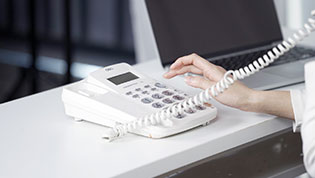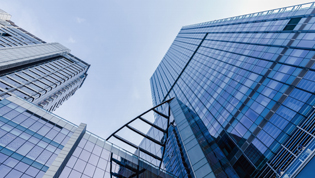發(fā)布時(shí)間:2022-11-26 16:05:41 點(diǎn)擊次數(shù):188
The fire emergency lighting and evacuation indication system is divided into non centralized control system and centralized control system according to the control method. According to the implementation method of emergency power supply, it can be divided into self-contained power supply system and centralized power supply system. According to the above two classification methods, the fire emergency lighting and evacuation indication system can be divided into the following four forms:
(1) The self-contained power supply is a non centralized control type, and the system composition is shown in Figure 1;
(2) Power centralized control type, system composition is shown in Figure 2;
(3) The centralized power supply is not a centralized control type, and the system composition is shown in Figure 3;
(4) Centralized power supply and centralized control type, the system composition is shown in Figure 4.
Before the construction and installation of the fire emergency lighting and evacuation indication system, the outer packaging of the product should be checked for damage, and the appearance and structure should be checked for defects. The system equipment, materials, and accessories should be strictly inspected (inspected) and selected for compliance in accordance with the quality control requirements of the construction process. Unqualified equipment, materials, accessories, and products that do not meet the requirements of the design drawings shall not be used.
1�、 General requirements
1. Plug connection cannot be used between the fire emergency light and the power supply line;
2. The installation of fire emergency lighting fixtures is firm, and there are no obstructions around the fire emergency sign lighting fixtures;
3. When installing fire emergency lighting, anti glare measures should be taken when facing the evacuation direction.
4. When hoisting fire emergency lights, metal suspension pipes should be used, and the upper end of the suspension pipe should be fixed to the building entity or component;
5. The light storage type sign board can only be installed on the same line as the direction indicated by the sign light, but cannot replace the sign light;
6. Fire emergency lights should be installed on non combustible walls and non combustible decorative materials.
2、 Installation of main components of the system
(1) When installing at the top, try not to stick to the top. The distance between the upper edge of the lamp and the ceiling should be greater than 200mm. When lifting, metal suspension rods or chains should be used, and the upper end of the suspension rod or chain should be fixed to the building structure.
(2) When installed at low points in evacuation corridors and their corners, the sign surface should be parallel to the wall, and the protruding parts of the wall should not have sharp corners or protruding fasteners.
(3) When the lamp is installed on the ground, all metal components of the lamp should undergo anti-corrosion or anti-corrosion treatment. The power connection and control wire connection should be sealed with sealant. The surface of the marker light should be parallel to the ground and the height difference from the ground should not exceed 3mm.
(4) When installing on the top of the side wall, the distance between the bottom and the ground should not be less than 2 meters. When installing on the side wall below 1 meter from the ground, pre embedded installation should be used.
(5) The connecting wire between the emergency power box and the lighting fixtures should be connected or crimped.
(6) When installing inside the ceiling, it should be possible to open the ceiling, and there should be clear markings on the lower surface of the ceiling.
(7) The installation site should be free of corrosive gases, vapors, combustibles, and dust; Batteries should be placed in well ventilated areas, strictly prohibited from being placed in sealed environments, places with combustible gas pipelines, warehouses, etc.
(8) When installed on the ground, it should be above the ground by more than 150 millimeters, and the channels in front and behind the screen should be able to meet the needs of battery replacement.
The centralized power supply and related equipment for emergency lighting are shown in the figure.
(9) The emergency lighting controller should be installed firmly and not tilted. When installed on lightweight walls, reinforcement measures should be taken.
(10) The main power supply of the emergency lighting controller should have clear signs and be directly connected to the fire power supply. It is strictly prohibited to use power plugs. The emergency lighting controller should be directly connected to its external backup power supply. The grounding should be firm and clearly marked.
(11) The control circuit of the emergency lighting controller should be connected through a separate pipeline. The cables or wires entering the emergency lighting controller should be arranged neatly, avoid crossing, and be firmly fixed; The two ends of the cable core should be labeled with numbers, consistent with the drawings, with clear handwriting and not easily faded; Each terminal of the terminal board should not exceed two wires, and the cable core wire should have a margin of not less than 200mm. The wires should be bundled into bundles, and after the wires pass through the pipeline, the pipe mouth should be sealed.
(12) When the centralized power output branch of emergency lighting and the control line of the centralized control system are laid in the shaft, and there is no fire separation between wires and cables with combustion performance lower than B1 level in the shaft, wires and cables with combustion performance A * should be selectable; When there is a fireproof partition, wires and cables with a combustion performance of B1 can be selected.
(13) When the combustion performance is Class B1 wires and cables, the output lines of the emergency lighting distribution device and the control lines of the centralized control system should be protected by metal pipes, or they can be laid in the cable tray or trunking with the same combustion performance; When the combustion performance is A-grade wires and cables, they can be laid exposed.
(14) When installing the power and control wires of lamps on the ground or in damp places, corrosion-resistant rubber cables should be used and anti-corrosion and moisture-proof measures should be taken.
(15) Cables of different voltage levels shall not be threaded into the same protective tube. When the same trunking is shared, metal partitions are used to separate the trunking.
(16) The distribution branch of the system uses copper wires, and the control wire uses multi-stranded copper wires.





